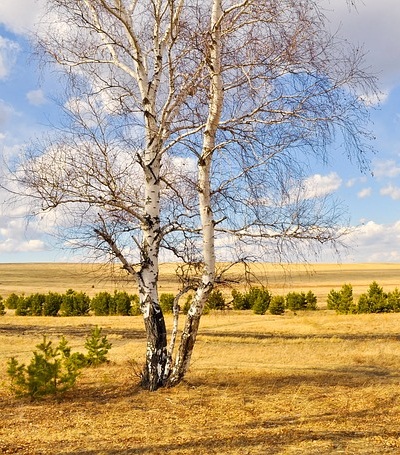The Australian Dental Association Publishes Suggestions for Greening Oral Health Care Businesses
In light of the need for oral health care providers to go green in practicing their profession, the Australian Dental Association put forward various ideas. The suggestions.can help oral healthcare businesses shift to sustainable dental services even gradually, as every change no matter how small, can go a long way in protecting the planet.
Globally, other businesses are shifting to sustainable and environment-friendly methods in order to alleviate and to not stoke the warming conditions with more CO2 emissions. .
Structuring a framework for oral healthcare provision is essential, especially to promote environmental sustainability and ecology protection aligned with ideal patient care. Providing good oral health care is a great way to reduce the chances of contracting diseases. It has already been established that there is a correlation between an environmentally sustainable practice and giving high-quality care to patients.
There are three principal sources on how oral healthcare contributes to greenhouse gas emissions:
1. Travel made by health personnel and patients, while going back and forth, especially to remote care centres;
2. Manufacturing, allocating, and procuring the dental materials needed, specifically the different metals used for tooth implant.
3. Managing waste generation particularly in disposing single-use plastics and other dental clinic disposables
Examples of Eco-Friendly Changes Suggested by ADA
Below are some of the suggestions put forward by ADA to at least give oral health care businesses, ideas on how to change a dental clinic into an eco-friendly and sustainable dental care facility.
- Opt for sensor-operated faucets, and low-flow fixtures and faucets;
- Have an amalgam separator installed; or install a central vacuum that does not use water but outfitted with an amalgam trap;
- Re-arrange or remodel the office layout with a goal of maximizing ventilation and natural light;
- Register for the energy saving program of the local electric utility company;
- Place a dimmer lighting system as it saves electricity and only uses the right amount of light needed;
- Invest in water heaters and solar electric panels; and
- Replace windows made of reflective glass to trap heat in during cold season and to prevent heat from coming in during warm season. .
Switching to Green Products
Below are some ways an oral health care clinic can switch to green products:
- Buy eco-friendly or organic scrubs;
- Never use aerosol products
- Opt for surface disinfectants that are less harmful;
- Ditch disposable plastics and opt for reusable stainless steel high- and low volume, surgical or endodontic suction tips;
- Opt for stainless steel prophy heads instead of using disposable cups filled with prophy;
- Revert to reusable glass irrigation syringes as an alternative for disposable plastic syringes; and
- Use biodegradable disposable cups instead of ordinary paper cups.
There are so many more suggestions that oral health care providers and professionals can implement to make their business more sustainable and eco-friendly. Some recommend car pooling and encourage the use of bikes when visiting the clinic for consultations. Sone other suggestions require greater capital investments as it involves collaborating with architects and engineers that focus on developing and building sustainable building designs.




 When it comes to insurance products on Medicare, there are several options on the market, including Medicare Advantage plans. These plans are offered to individuals who are 65 years old and over, and to qualified individuals with disability. They are alternatives to get coverage for Medicare Part A (hospitalization) and Medicare Part B (medical services).
When it comes to insurance products on Medicare, there are several options on the market, including Medicare Advantage plans. These plans are offered to individuals who are 65 years old and over, and to qualified individuals with disability. They are alternatives to get coverage for Medicare Part A (hospitalization) and Medicare Part B (medical services).
 Pharmaceutical residues in the environment affect entire ecosystems and risk assessment is only possible to a limited extent. Environmentally conscious handling of pharmaceuticals is particularly important. This way, you can be able to minimize the entry of active ingredients into nature.
Pharmaceutical residues in the environment affect entire ecosystems and risk assessment is only possible to a limited extent. Environmentally conscious handling of pharmaceuticals is particularly important. This way, you can be able to minimize the entry of active ingredients into nature.




 Exercise will allow you to control your weight, but not in how you believe. If you’re attempting to drop weight and start a
Exercise will allow you to control your weight, but not in how you believe. If you’re attempting to drop weight and start a  Excessive daytime sleepiness or EDS is the propensity to doze off during the daytime. EDS could affect one’s alertness, attention, concentration, as well as impacts one’s overall health. In itself, this health problem isn’t a sleep disorder, rather it is a symptom of other disorders related to sleep such as narcolepsy, sleep apnea, insomnia, Circadian rhythm disorders, and insufficient sleep.
Excessive daytime sleepiness or EDS is the propensity to doze off during the daytime. EDS could affect one’s alertness, attention, concentration, as well as impacts one’s overall health. In itself, this health problem isn’t a sleep disorder, rather it is a symptom of other disorders related to sleep such as narcolepsy, sleep apnea, insomnia, Circadian rhythm disorders, and insufficient sleep. Establish Healthy, Consistent Mealtimes
Establish Healthy, Consistent Mealtimes Have Regular Exercise
Have Regular Exercise

